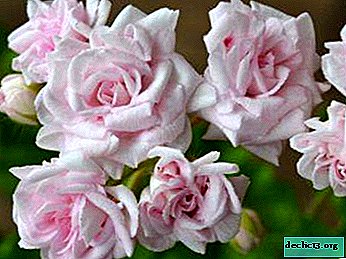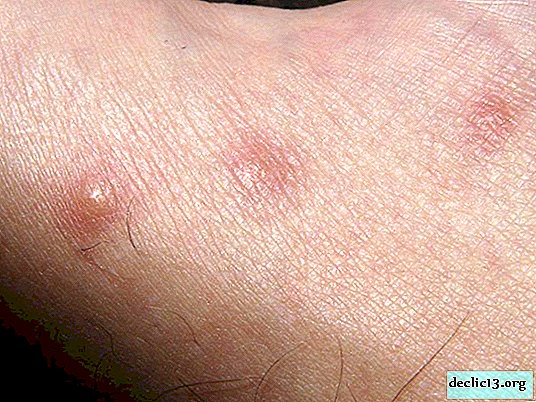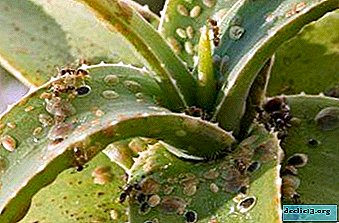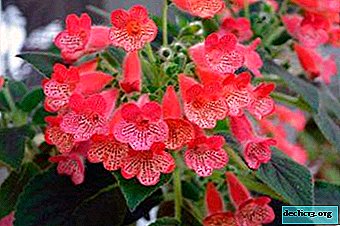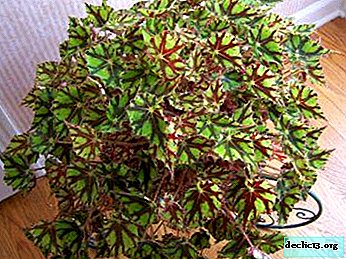What should I do if a spider mite or other pest appears on the marigolds? Their types with photos and methods of dealing with them
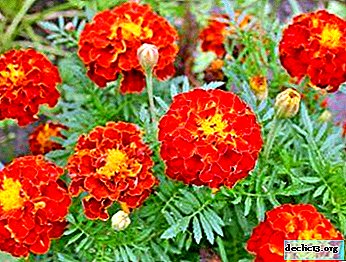
Marigolds are the most popular annual flower culture. The reasons for the popularity are simple and obvious: they look exquisite, unpretentious to growing conditions, diseases and pests. Therefore, they are selected for landscaping gardens, summer cottages, flower beds in front of houses, etc.
More than thirty types of plants are distinguished: erect, thin-leaved, rejected, etc., which will turn any site into a work of art. Will one ever have to save this amazing plant from pests? What diseases do amateur gardeners face?
What is this plant?
Marigolds are plants with fibrous roots, they have strongly branched and erect stems. Their height is 15-120 cm. There are many leaves of pinnately separate or pinnately dissected, the location of which is regular or opposite. Their edges are serrated, rarely solid. Depending on the species, the leaves are either light green or dark green.
This plant has an inflorescence - a basket. In its middle tubular flowers flaunt, and reed surround them. The ratio of reed and tubular flowers is different, so some marigolds are terry, while others are simple. Their diameter is 12 cm. The color scheme varies from yellowish-white to brown or orange. A wonderful aroma comes from them, in which spicy shades prevail. It is a pity that they bloom only from mid-June to late autumn.
You can learn about the types and varieties of perennial and annual marigolds, as well as see a photo of the plant, here, and from this article you will learn about the varieties of undersized marigolds and the rules for caring for them.
Susceptibility to various diseases
ATTENTION: As mentioned above, gardeners love marigolds, since pests do not harm them. Sometimes they get sick. This is easily guessed by yellowed and deformed shoots.Among the yellow plaque, black dots are visible, the size of which varies from day to day. If the plant blooms, then the buds and flowers on it are underdeveloped, ugly. He was struck by a viral disease that cannot be cured. The only way to prevent the spread of marigold disease is to dig up and burn dried stems and flowers.
About why marigold buds turn black, leaves dry and wither, and how to save a plant from death, read here, and from this article you will learn about diseases and pests that can destroy a flower.
Who eats marigolds?
Slugs are the most dangerous pests. They gnaw stems and eat foliage. As soon as they notice them on the plant, it is important to start taking action.
Views from the photo
Any pest will not cause severe harm to marigolds, if you notice in time that they are withering. The timely establishment of the one who eats the leaves helps in the fight against him.
Spider mite

Basically, this pest harms young seedlings. Favorable environment for the spread of spider mites - overdried indoor air. It will harm adult marigolds if the summer is dry and hot. If you do not take action and do not fight it at the stage of acquiring a whitish shade with leaves, they will begin to dry out and then die.
What to do if such a web appeared on the leaves? Just fight the spider mite. Indoors increase air humidity. Wet air is the only thing the tick is afraid of.
How to treat from a spider mite? Some gardeners, in addition to changing air humidity, treat marigolds with tobacco infusion.. Two hundred grams of tobacco or shag are bred in three liters of water. Two days later (the solution is insisted before), it is filtered, and the remaining water is added to a volume of 10 liters. Laundry soap (50 mg) is ground, added to the resulting tincture and mixed until completely dissolved.
TIP: Ready infusion of tobacco process the affected culture. Soon the spider mite will recede, as it does not tolerate the smell of tobacco.Aphid

The most malicious pest is aphids. She settles on stems, leaves, roots. She crawls, flies, but does not forget to hit parts of the plant. She sucks out the cell sap and releases poison along with it. Because of this, the leaves curl, deform, and die. Aphid harms shoots, as a result of which they practically do not grow. The tops under her "leadership" are bent. Florists notice aphids not only by the above symptoms, but also by sweet secretions on the leaf surface.
In addition to marigolds, aphids will harm other indoor and garden plants. If you do not take action, all cultures on the windowsill will dry out and die.
How to deal with aphids? There are several ways to fight. Some flower growers believe that it disappears when marigolds spray with a hose. Others use modern chemicals to combat it:
- Biotlin.
- Spark.
- Intavir.
Slugs and Snails

Marigolds in the garden are harmed by snails and slugs that gnaw stems and eat leaveswhen the room has high humidity or outdoors, the summer will be hot. Growers take action by noticing holes on large green leaves and eaten fleshy stems.
Beginners do not notice for a long time that someone is eating leaves, because slugs and snails harm him at night. The only thing they don’t like during the day is mucus on the leaves, ground and stems.
To marigolds again pleased with the flowering and abundance of large green leaves, not far from them on the boards lay cut potatoes and apples. Manually collecting the pest and sprinkling the soil next to them with a mixture of lime and ash also helps. An effective control measure is to treat the bushes with a solution of mustard (100 grams of the powder is diluted in a bucket of water).
Thrips

In nature, there are about 2 thousand species of thrips, which are classified and identified a hundred varieties. Those that harm marigolds have a body length of 0.5-14 mm. They have mouth-sucking-sucking mouth organs. Legs are slender, not at all interfering with running. On the legs, one tooth and a device that allows you to easily stick to your favorite area on the plant.
Thrips do not eat leaves. They like buds. Holes are noticed on the petals, and soon the bud begins to rot and dry. He will die without opening. Thrips is the only pest that will appear despite excellent care.
Although the heat, even the rain they will drink the juice from them. In order not to deal with them, they carry out preventive treatment of the garden with the onset of the first warm days in the spring. Re-treatment is done in the summer when the plant has gained color and will soon bloom.
If flower growers planted marigolds for the first time, they do not know about prevention. They learn about thrips when buds fall. In this case, you need to trim them, and sprinkle the bushes with Fitoverm, Zubr or Tsvetolyuksom Bau. Folk remedies are useless in this case.
Caterpillars

Marigolds sometimes destroy caterpillars. They are attracted to dark green or light green foliage. If the plant blooms, the flowers on the background of the eaten leaves will be "lost." They lay larvae on them. This is easy to understand from twisted leaves.
TIP: To cure a flower from caterpillars, spray it with chemicals or dust it with ashes.Whitefly

Whitefly is a pest that affects marigolds that grow in greenhouses or greenhouses. The reason is overdried air. If they grow in open ground, then the reason is different - heat.
Who would have thought that there would be so much harm from a small white butterfly with a body length of 2 mm. She will suck the juice from the leaves. If it lays the larvae, the secretions will form a soot fungus on the leaves, as a result of which they blacken and fall off. In case of severe whitefly damage, it is recommended to buy and use Aktara according to the instructions.
Preventive measures
Experienced gardeners say that marigolds are a plant that rarely infects pests. They are "active" only if there is rainy weather or if the air is dry.
So that slugs and snails, caterpillars and thrips do not harm them, it is important to arrange containers with bleach in a timely manner on a windowsill or in a greenhouse. Chlorine has a pungent odor that repels pests. If, for prophylactic purposes, crops are treated with infusion of onion peel, then the spider mite is not afraid of them.
Conclusion
Not only experienced growers grow marigolds. They are the favorite culture of beginners in landscaping. They want to decorate their balcony or garden. Their choice is clear: the culture is unpretentious, drought tolerant and not demanding on the soil. The only thing to do is to take preventative measures so that they do not fall prey to thrips, caterpillars and slugs.


